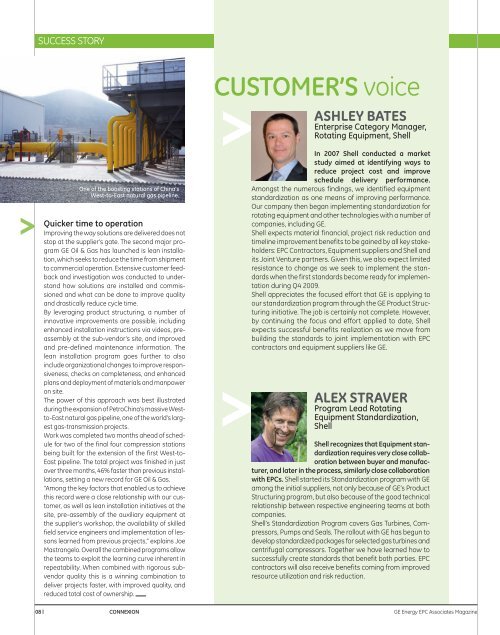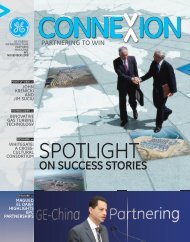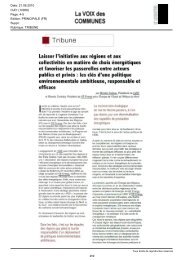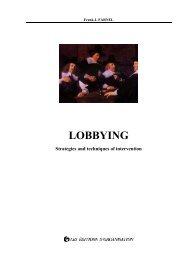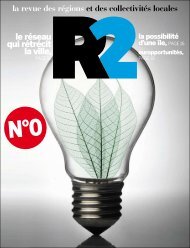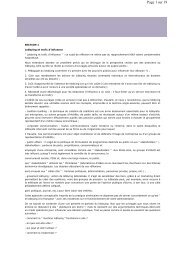GE ENErGy - Frank Farnel
GE ENErGy - Frank Farnel
GE ENErGy - Frank Farnel
You also want an ePaper? Increase the reach of your titles
YUMPU automatically turns print PDFs into web optimized ePapers that Google loves.
SUCCESS STOry<br />
one of the boosting stations of China's<br />
West-to-east natural gas pipeline.<br />
Quicker time to operation<br />
Improving the way solutions are delivered does not<br />
stop at the supplier’s gate. The second major program<br />
<strong>GE</strong> Oil & Gas has launched is lean installation,<br />
which seeks to reduce the time from shipment<br />
to commercial operation. Extensive customer feedback<br />
and investigation was conducted to understand<br />
how solutions are installed and commissioned<br />
and what can be done to improve quality<br />
and drastically reduce cycle time.<br />
by leveraging product structuring, a number of<br />
innovative improvements are possible, including<br />
enhanced installation instructions via videos, preassembly<br />
at the sub-vendor’s site, and improved<br />
and pre-defined maintenance information. The<br />
lean installation program goes further to also<br />
include organizational changes to improve responsiveness,<br />
checks on completeness, and enhanced<br />
plans and deployment of materials and manpower<br />
on site.<br />
The power of this approach was best illustrated<br />
during the expansion of PetroChina’s massive Westto-East<br />
natural gas pipeline, one of the world’s largest<br />
gas-transmission projects.<br />
Work was completed two months ahead of schedule<br />
for two of the final four compression stations<br />
being built for the extension of the first West-to-<br />
East pipeline. The total project was finished in just<br />
over three months, 46% faster than previous installations,<br />
setting a new record for <strong>GE</strong> Oil & Gas.<br />
“Among the key factors that enabled us to achieve<br />
this record were a close relationship with our customer,<br />
as well as lean installation initiatives at the<br />
site, pre-assembly of the auxiliary equipment at<br />
the supplier’s workshop, the availability of skilled<br />
field service engineers and implementation of lessons<br />
learned from previous projects,” explains Joe<br />
Mastrangelo. Overall the combined programs allow<br />
the teams to exploit the learning curve inherent in<br />
repeatability. When combined with rigorous subvendor<br />
quality this is a winning combination to<br />
deliver projects faster, with improved quality, and<br />
reduced total cost of ownership.<br />
CUstOMER’s voice<br />
aShley bateS<br />
enterprise Category Manager,<br />
rotating equipment, Shell<br />
In 2007 shell conducted a market<br />
study aimed at identifying ways to<br />
reduce project cost and improve<br />
schedule delivery performance.<br />
Amongst the numerous findings, we identified equipment<br />
standardization as one means of improving performance.<br />
Our company then began implementing standardization for<br />
rotating equipment and other technologies with a number of<br />
companies, including <strong>GE</strong>.<br />
Shell expects material financial, project risk reduction and<br />
timeline improvement benefits to be gained by all key stakeholders:<br />
EPC Contractors, Equipment suppliers and Shell and<br />
its Joint venture partners. Given this, we also expect limited<br />
resistance to change as we seek to implement the standards<br />
when the first standards become ready for implementation<br />
during q4 2009.<br />
Shell appreciates the focused effort that <strong>GE</strong> is applying to<br />
our standardization program through the <strong>GE</strong> Product Structuring<br />
initiative. The job is certainly not complete. However,<br />
by continuing the focus and effort applied to date, Shell<br />
expects successful benefits realization as we move from<br />
building the standards to joint implementation with EPC<br />
contractors and equipment suppliers like <strong>GE</strong>.<br />
alex Straver<br />
program lead rotating<br />
equipment Standardization,<br />
Shell<br />
shell recognizes that Equipment standardization<br />
requires very close collaboration<br />
between buyer and manufacturer,<br />
and later in the process, similarly close collaboration<br />
with EpCs. Shell started its Standardization program with <strong>GE</strong><br />
among the initial suppliers, not only because of <strong>GE</strong>’s Product<br />
Structuring program, but also because of the good technical<br />
relationship between respective engineering teams at both<br />
companies.<br />
Shell’s Standardization Program covers Gas Turbines, Compressors,<br />
Pumps and Seals. The rollout with <strong>GE</strong> has begun to<br />
develop standardized packages for selected gas turbines and<br />
centrifugal compressors. Together we have learned how to<br />
successfully create standards that benefit both parties. EPC<br />
contractors will also receive benefits coming from improved<br />
resource utilization and risk reduction.<br />
08 l CONNEXION <strong>GE</strong> Energy EPC Associates Magazine


